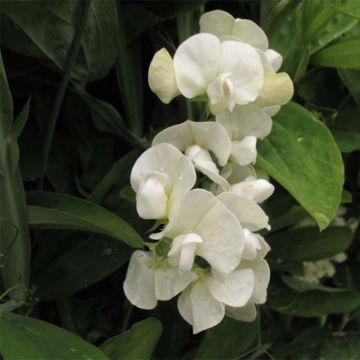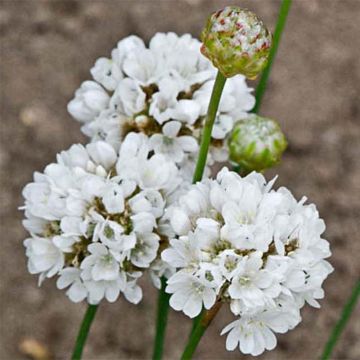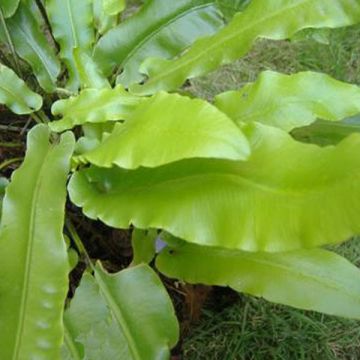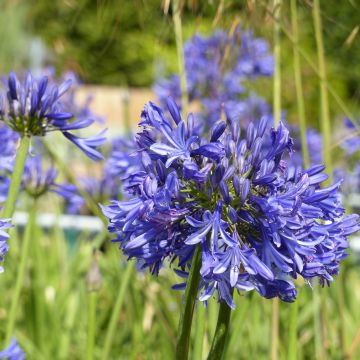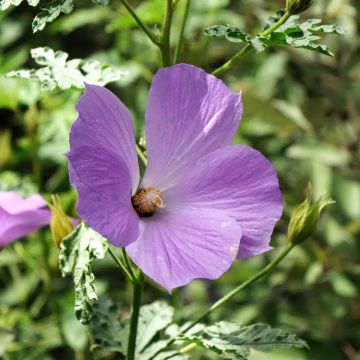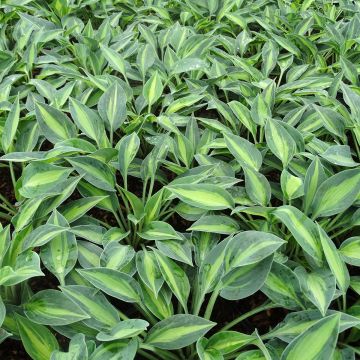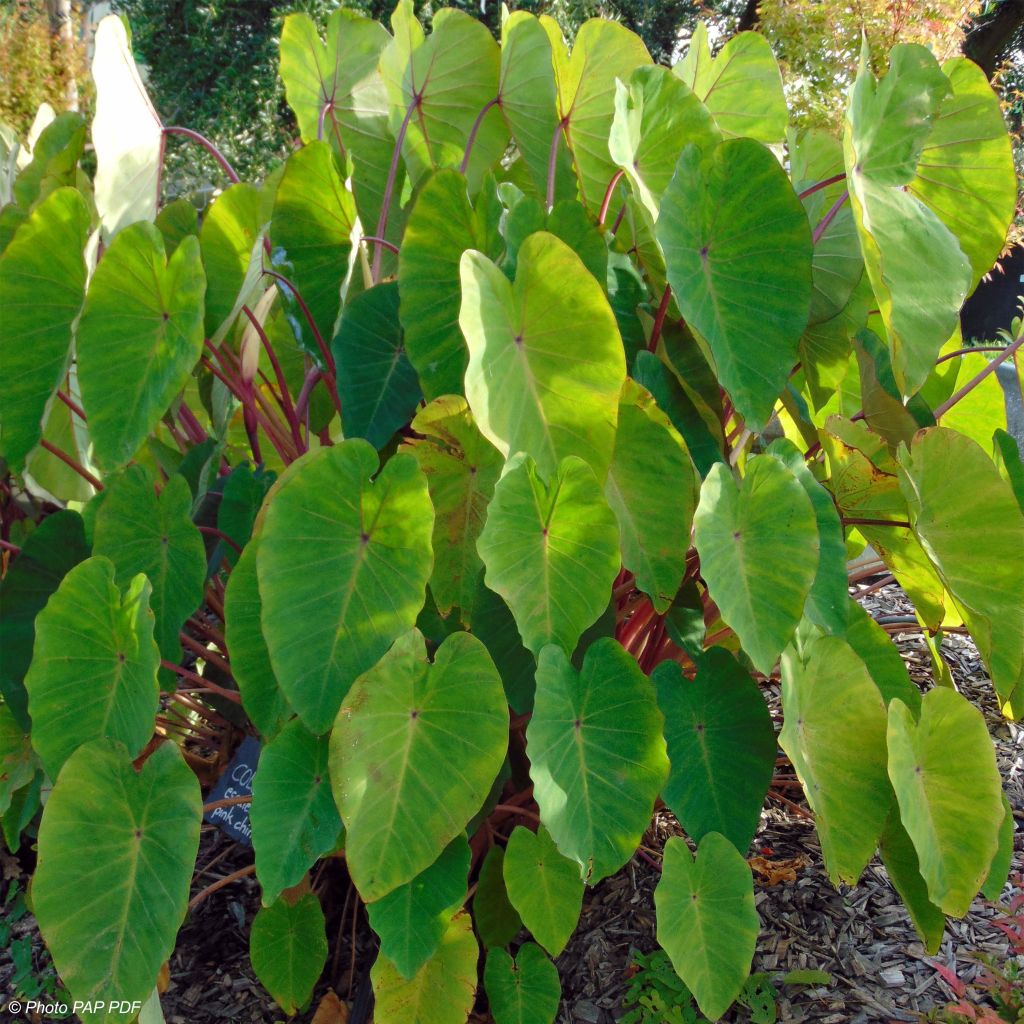

Colocasia Pink China


Colocasia Pink China
View more pictures
Hide images
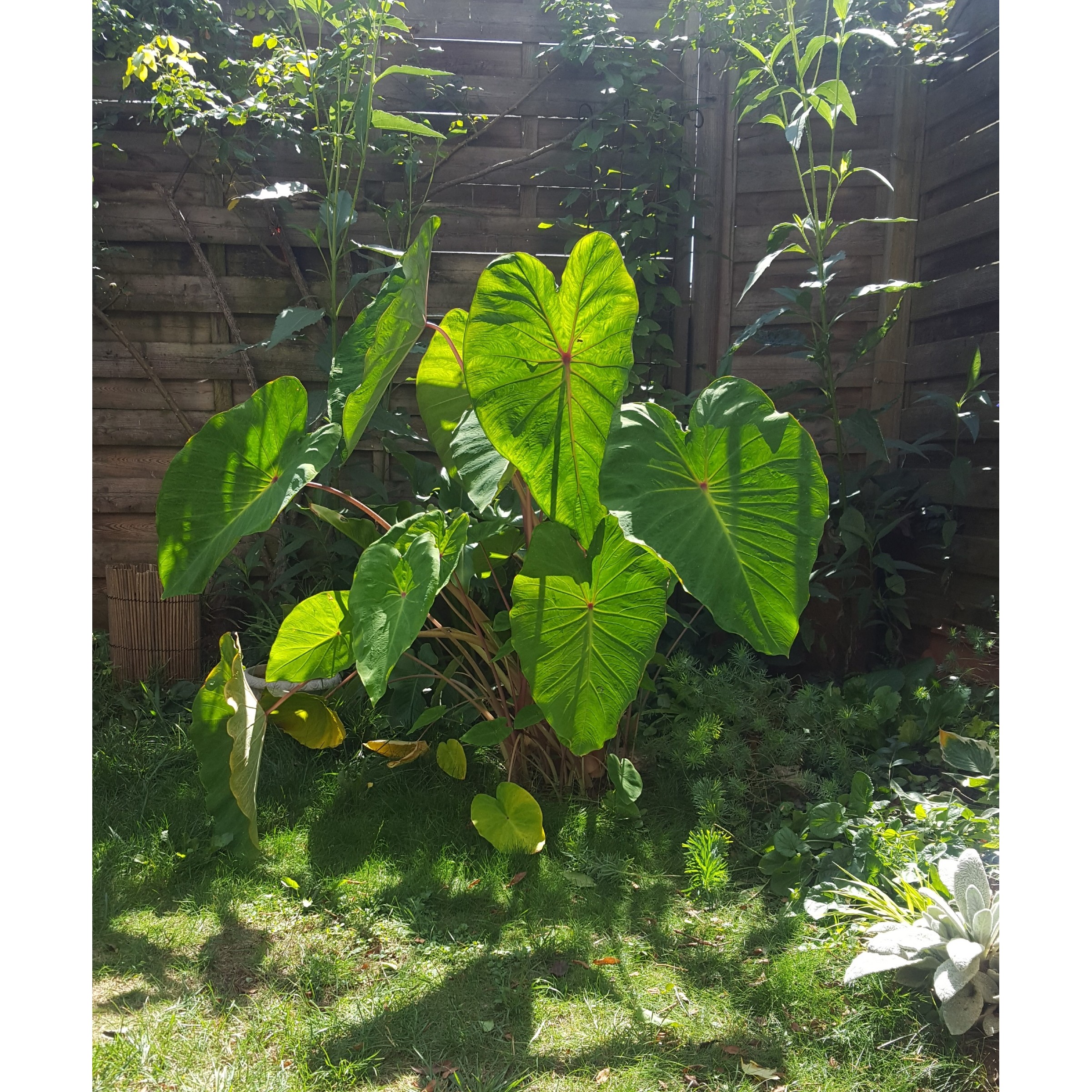
Sandrine B.

Colocasia Pink China - A wonder!
Sandrine B. • 21 FR
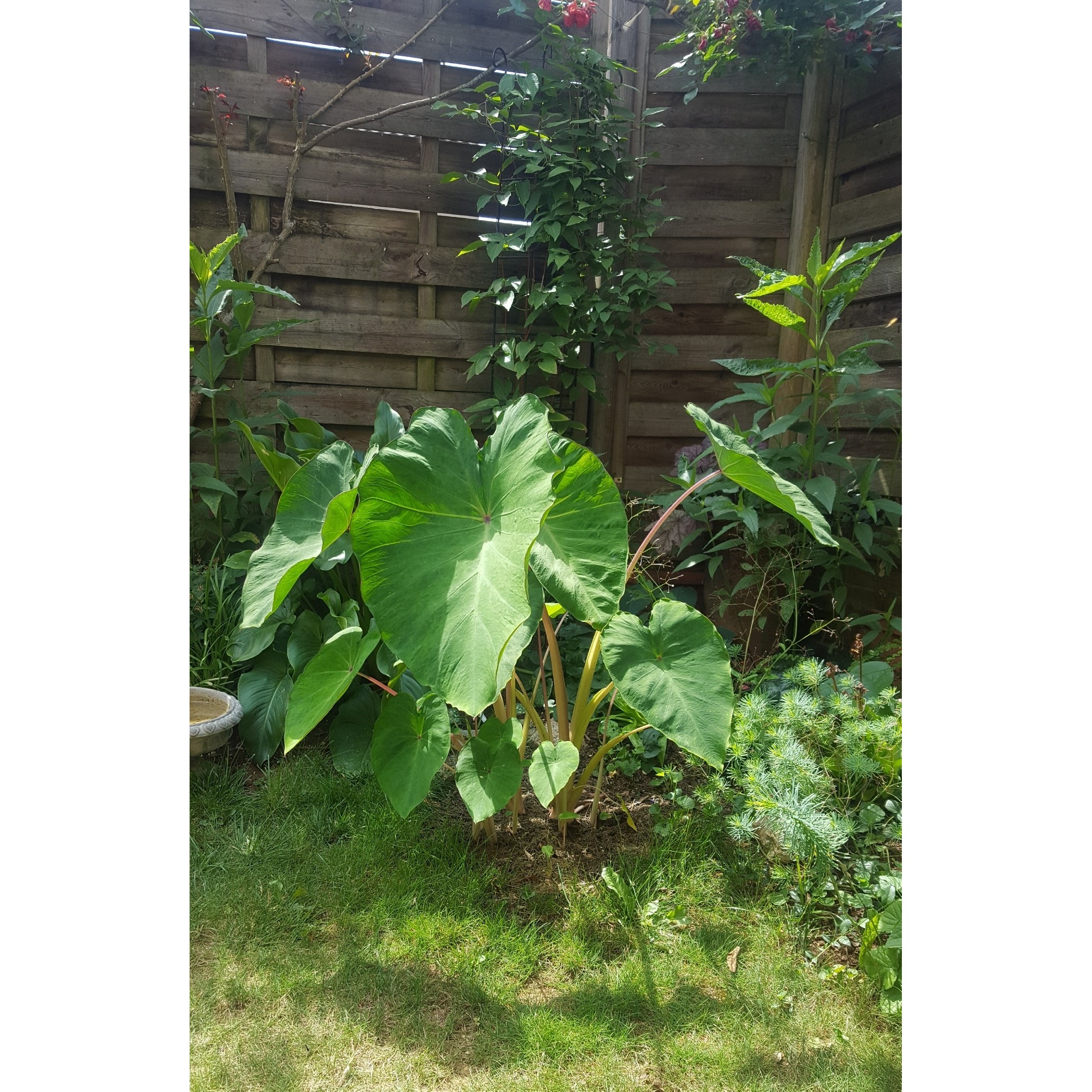
Sandrine B.

Colocasia planté fin février - photo début juillet - climate 7
Sandrine B. • 21 FR
Colocasia Pink China
Colocasia x esculenta Pink China
Taro, Elephant Ear, Cocoyam, Eddo, Dasheen
Very nice young plant, well packaged, good growth. Beautiful water and impeccable service, thank you very much!
Vincent, 10/09/2023
Special offer!
Receive a €20 voucher for any order over €90 (excluding delivery costs, credit notes, and plastic-free options)!
1- Add your favorite plants to your cart.
2- Once you have reached €90, confirm your order (you can even choose the delivery date!).
3- As soon as your order is shipped, you will receive an email containing your voucher code, valid for 3 months (90 days).
Your voucher is unique and can only be used once, for any order with a minimum value of €20, excluding delivery costs.
Can be combined with other current offers, non-divisible and non-refundable.
Home or relay delivery (depending on size and destination)
Schedule delivery date,
and select date in basket
This plant carries a 12 months recovery warranty
More information
We guarantee the quality of our plants for a full growing cycle, and will replace at our expense any plant that fails to recover under normal climatic and planting conditions.

Would this plant suit my garden?
Set up your Plantfit profile →
Description
Colocasia esculenta 'Pink China' is a variety of Elephant Ear that appears to be particularly hardy, well adapted to cool climates, regrowing from the crown from below -12°C (10.4°F). Of medium size and prolific, it stands out for its long, stunning bright pink petioles bearing large green leaves with a bluish sheen. This perennial plant with tropical origins will bring all the luxuriance of its original lands to our urban gardens and terraces. It is also a very beautiful indoor plant, which, like monstera deliciosa, will become a centrepiece over time in a colonial-exotic, vintage, contemporary, English or traditional-style decor.
Originating from India, the Colocasia esculenta, also called True Taro or Edible Taro, spread a long time ago to the tropical regions of South America and Oceania, and later in tropical Africa. This rhizomatous perennial plant is a cousin of Arums and Ipomoeas and belongs to the Araceae family. The 'Pink China' cultivar is a safe bet, endowed with an exceptional ability to withstand cold and wet weather and a strong propensity to sucker from its tuberous rhizome. The bushy mature plant will measure an average of 1.25 m (4ft) high and 90 cm (35in) in diameter, with magnificent, slightly elongated heart-shaped leaves, a slightly chalky, bluish green, veined with light green, tinged with pink. The leaf blade can reach 60 cm (24in) long and 40 cm (16in) wide, carried by a long pink-purple petiole, sheathing at the base. The surface of the leaves allows water to slide off with its good water repellency. During its growth, the plant branches out from the base and produces numerous sucker tubers that give rise to vigorous young plants. When you remove an old leaf, two new ones take its place.
In the garden or house, 'Pink China' Colocasia is a tropical plant that is very easy to grow even in wet and cool climates. It likes a sunny or semi-shaded exposure and is very resistant to frost if protected under a thick mulch. It stands out as a focal point in any decor, in the garden, the house, or on a veranda. It is a marvel planted in a large pot on the terrace, balcony, or patio, or on the banks of a pond. This voracious plant gets along well with cannas, arums (Zantedeschia aethiopica), banana trees, Gunnera, or tree ferns whose magnificence recalls ancient forests.
The True Taro is consumed in Africa, China, Polynesia, and several other parts of the world. Its tubers are rich in starch, and its young leaves are eaten like spinach.
Report an error about the product description
Colocasia Pink China in pictures
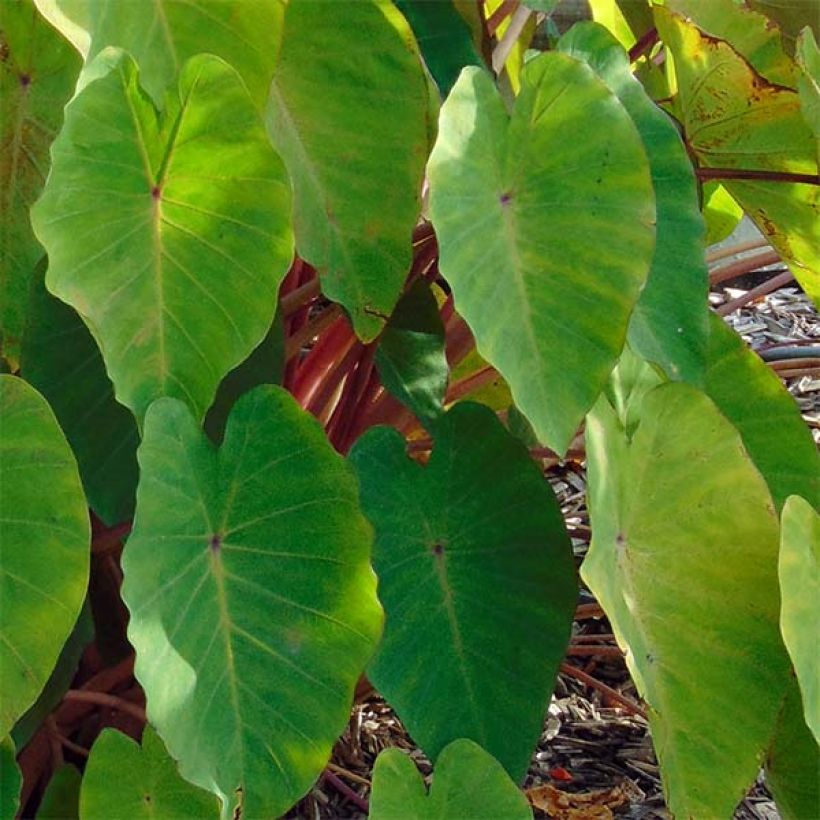

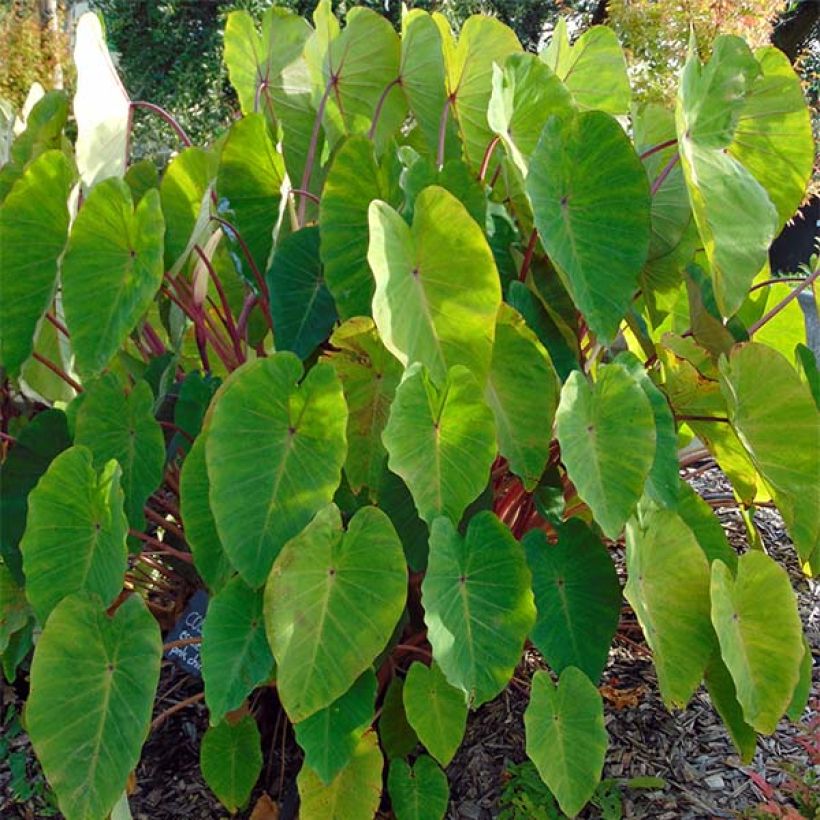

Flowering
Foliage
Plant habit
Safety measures
Botanical data
Colocasia
x esculenta
Pink China
Araceae
Taro, Elephant Ear, Cocoyam, Eddo, Dasheen
Cultivar or hybrid
atteintescutaneomuqueuses
Cette plante peut provoquer l'apparition de réactions cutanées indésirables, une atteinte des yeux, ou des difficultés respiratoires si elle est ingérée.
Ne la plantez pas là où de jeunes enfants peuvent évoluer. Evitez tout contact avec la peau: privilégiez l'emploi de gants pour la manipuler. En cas de contact, lavez-vous soigneusement les mains et rincez abondamment à l'eau la zone concernée. Lavez les vêtements entrés en contact. En cas de réaction cutanée, contactez votre médecin ou le centre antipoison le plus proche de chez vous. En cas d'atteinte étendue ou de difficultés respiratoires, appelez immédiatement le 15 ou le 112.Pensez à conserver l'étiquette de la plante, à la photographier ou à noter son nom, afin de faciliter le travail des professionnels de santé.
Davantage d'informations sur https://plantes-risque.info
Other Perennials A to Z
View all →Planting and care
Plant Colocasia in a sunny position or partial shade. They need moist to wet, fertile and humus-rich soil and appreciate a nitrogen fertilizer. You can plant your Colocasia in large containers, with regular and abundant watering during the growing season, reduced in winter. If the atmosphere is too dry in winter, the plants may be attacked by red spider mites. Usually grown as greenhouse or conservatory plants, they are actually quite hardy perennials (down to -15°C (5°F) for some cultivars like Pink China). You can grow them in the garden, mulching the crown well in winter. If the soil is waterlogged in winter, the rootstock may rot, so the soil will need to be well-drained. Watch out for attacks by slugs and snails that enjoy feasting on young leaves.
Planting period
Intended location
Care
-
, onOrder confirmed
Reply from on Promesse de fleurs
Haven't found what you were looking for?
Hardiness is the lowest winter temperature a plant can endure without suffering serious damage or even dying. However, hardiness is affected by location (a sheltered area, such as a patio), protection (winter cover) and soil type (hardiness is improved by well-drained soil).

Photo Sharing Terms & Conditions
In order to encourage gardeners to interact and share their experiences, Promesse de fleurs offers various media enabling content to be uploaded onto its Site - in particular via the ‘Photo sharing’ module.
The User agrees to refrain from:
- Posting any content that is illegal, prejudicial, insulting, racist, inciteful to hatred, revisionist, contrary to public decency, that infringes on privacy or on the privacy rights of third parties, in particular the publicity rights of persons and goods, intellectual property rights, or the right to privacy.
- Submitting content on behalf of a third party;
- Impersonate the identity of a third party and/or publish any personal information about a third party;
In general, the User undertakes to refrain from any unethical behaviour.
All Content (in particular text, comments, files, images, photos, videos, creative works, etc.), which may be subject to property or intellectual property rights, image or other private rights, shall remain the property of the User, subject to the limited rights granted by the terms of the licence granted by Promesse de fleurs as stated below. Users are at liberty to publish or not to publish such Content on the Site, notably via the ‘Photo Sharing’ facility, and accept that this Content shall be made public and freely accessible, notably on the Internet.
Users further acknowledge, undertake to have ,and guarantee that they hold all necessary rights and permissions to publish such material on the Site, in particular with regard to the legislation in force pertaining to any privacy, property, intellectual property, image, or contractual rights, or rights of any other nature. By publishing such Content on the Site, Users acknowledge accepting full liability as publishers of the Content within the meaning of the law, and grant Promesse de fleurs, free of charge, an inclusive, worldwide licence for the said Content for the entire duration of its publication, including all reproduction, representation, up/downloading, displaying, performing, transmission, and storage rights.
Users also grant permission for their name to be linked to the Content and accept that this link may not always be made available.
By engaging in posting material, Users consent to their Content becoming automatically accessible on the Internet, in particular on other sites and/or blogs and/or web pages of the Promesse de fleurs site, including in particular social pages and the Promesse de fleurs catalogue.
Users may secure the removal of entrusted content free of charge by issuing a simple request via our contact form.
The flowering period indicated on our website applies to countries and regions located in USDA zone 8 (France, the United Kingdom, Ireland, the Netherlands, etc.)
It will vary according to where you live:
- In zones 9 to 10 (Italy, Spain, Greece, etc.), flowering will occur about 2 to 4 weeks earlier.
- In zones 6 to 7 (Germany, Poland, Slovenia, and lower mountainous regions), flowering will be delayed by 2 to 3 weeks.
- In zone 5 (Central Europe, Scandinavia), blooming will be delayed by 3 to 5 weeks.
In temperate climates, pruning of spring-flowering shrubs (forsythia, spireas, etc.) should be done just after flowering.
Pruning of summer-flowering shrubs (Indian Lilac, Perovskia, etc.) can be done in winter or spring.
In cold regions as well as with frost-sensitive plants, avoid pruning too early when severe frosts may still occur.
The planting period indicated on our website applies to countries and regions located in USDA zone 8 (France, United Kingdom, Ireland, Netherlands).
It will vary according to where you live:
- In Mediterranean zones (Marseille, Madrid, Milan, etc.), autumn and winter are the best planting periods.
- In continental zones (Strasbourg, Munich, Vienna, etc.), delay planting by 2 to 3 weeks in spring and bring it forward by 2 to 4 weeks in autumn.
- In mountainous regions (the Alps, Pyrenees, Carpathians, etc.), it is best to plant in late spring (May-June) or late summer (August-September).
The harvesting period indicated on our website applies to countries and regions in USDA zone 8 (France, England, Ireland, the Netherlands).
In colder areas (Scandinavia, Poland, Austria...) fruit and vegetable harvests are likely to be delayed by 3-4 weeks.
In warmer areas (Italy, Spain, Greece, etc.), harvesting will probably take place earlier, depending on weather conditions.
The sowing periods indicated on our website apply to countries and regions within USDA Zone 8 (France, UK, Ireland, Netherlands).
In colder areas (Scandinavia, Poland, Austria...), delay any outdoor sowing by 3-4 weeks, or sow under glass.
In warmer climes (Italy, Spain, Greece, etc.), bring outdoor sowing forward by a few weeks.
































